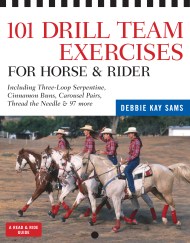Promotion
Use code MOM24 for 20% off site wide + free shipping over $45
By clicking ‘Sign Up,’ I acknowledge that I have read and agree to Hachette Book Group’s Privacy Policy and Terms of Use
By the Author

101 Drill Team Exercises for Horse & Rider
